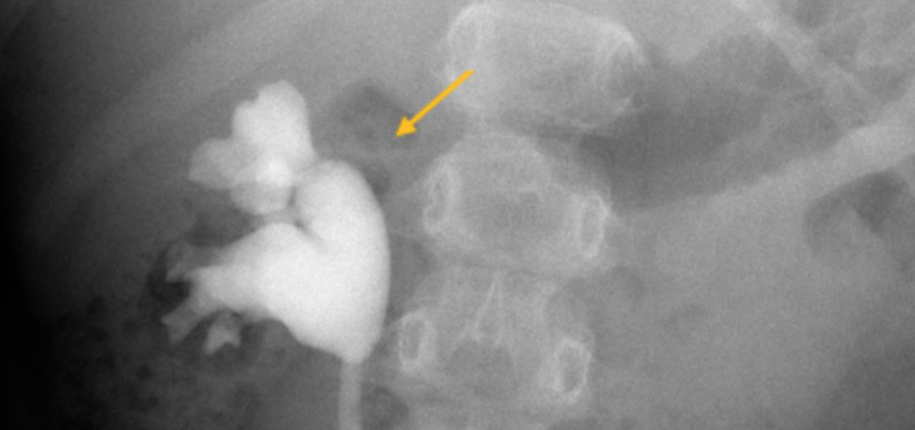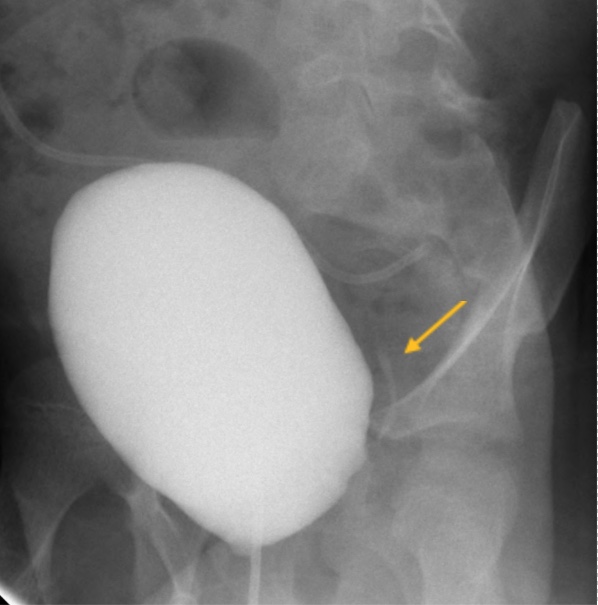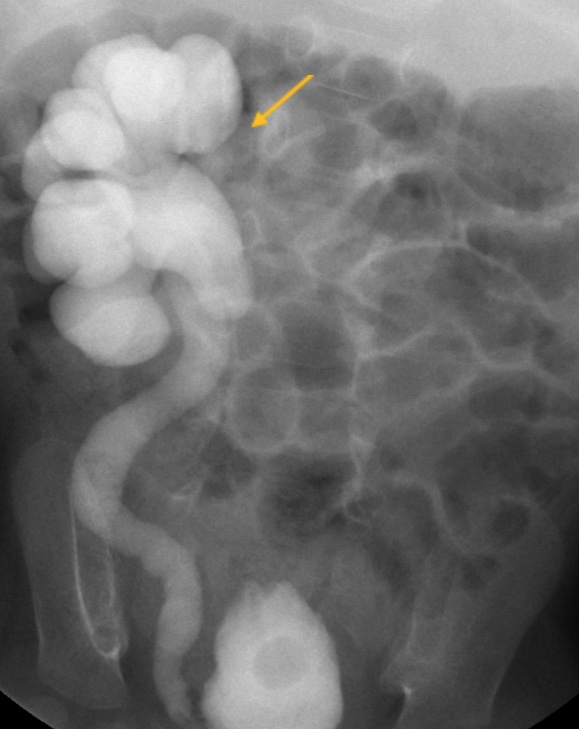
Your child’s doctor ordered a voiding cystourethrogram (VCUG) examination, which is a test that will look at your child’s bladder and urinary tract (urethra, ureter and/or kidneys). The exam will be performed in the fluoroscopy suite in the Radiology Department. During the exam, a radiology attending, fellow or radiology practitioner assistant will fill your child’s bladder with contrast, a clear liquid, via the tiny tube (catheter) that was carefully placed into your child’s bladder. As the bladder fills with the contrast, the radiologist will be taking live action pictures (x-rays) with an x-ray machine, aka the fluoroscopy tower. The contrast allows for the bladder to be seen on the pictures taken by the x-ray machine. Also, the clear liquid can show if they are any anatomical or structural anomalies of bladder, ureter, kidneys and/or urethra.
The real time images of your child’s bladder and urinary tract system are projected on a TV screen near the x-ray machine. You will notice that the radiologist or fellow is looking at the pictures during the exam, and might even discuss the real time findings with other staff in the room such as the radiology practitioner assistant (RPA) or radiology trainee. They are examining the pictures for any structural or anatomical anomalies and also looking for reflux.
But what is reflux?
Vesicoureteral reflux (VUR), aka reflux, is the abnormal movement of the contrast liquid backwards from the bladder into the ureter (small tubes that connect the kidneys to the bladder). The contrast liquid could even reflux higher and go back to the kidneys, and possibly cause dilation/swelling of the kidneys (pelvocaliectasis). Normally, urine flows from your child’s kidneys through the ureters down to the bladder; it is not supposed to flow backwards. The reflux is graded with a number ranging from 1 to 5. Grade 1 reflux is the most mild and grade 5 is the most severe. The grade of the reflux is evaluated from the x-ray pictures taken during your child’s VCUG. This grading system allows for your child’s doctor to determine the appropriate treatment. Below are some image examples of different grades of reflux.





What is the cause of reflux?
Dr. Katherine Epstein, author; Glenn Miñano, BFA, editor; Meredith Towbin, copy editor